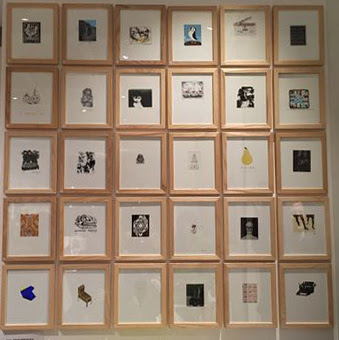THIS IS NOT MAGRITTE's PIPE
Can we really judge the familiar or common because in reality we all have preconceptions of it; we've already made up our minds about a person, portrait, subject or object. Therefore one can no longer be truly objective - a preference can be expressed but without objectivity. The commonplace is taken for granted, well-known through long or daily association. We look without seeing.Here started my exploration of divergent ways of working with the figurative form, challenging myself to create artwork using and combining a range of media, technologies and equipment that are unfamiliar.
I like fluidity, the organic and free form. Therefore the combination of using Lino with a sharp blade or photographic or silkscreen imagery which is then projected onto textiles to create soft curves and emulate the human form can be achieved.
I found using wood blocks too unwieldy. (Due to my my inexperience and lack of control when cutting in to the surface of a block, this process was unsuccessful. It made the precision needed to create curves frustrating). Lino worked much better in order to achieve a more expressionistic and textural linear form especially for figurative work. Also repeat pattern was easier to replicate on a variety of surfaces with a particularly pleasing textural quality.
Examples see: Lyonel Feininger
Untitled street scene - double exposure (1929-30)
Andreas Gursky
Pattern and paradigms of the repeat.
Acrylic paint on acetate worked well for linear projections on to skin and canvas. The contrast between the painted line on a curved surface was particularly evocative.
I used the copy camera with George to produce a series of large scale film positives of my 'Klimt' inspired life drawings which can be used for initial projected designs or textural silkscreen prints. Also I have combined my botanic illustration studies of flower forms as patterns on naked skin and translucent fabric which I then photographed and interpreted as repeated designs using both digital and traditional printing methods.
















































